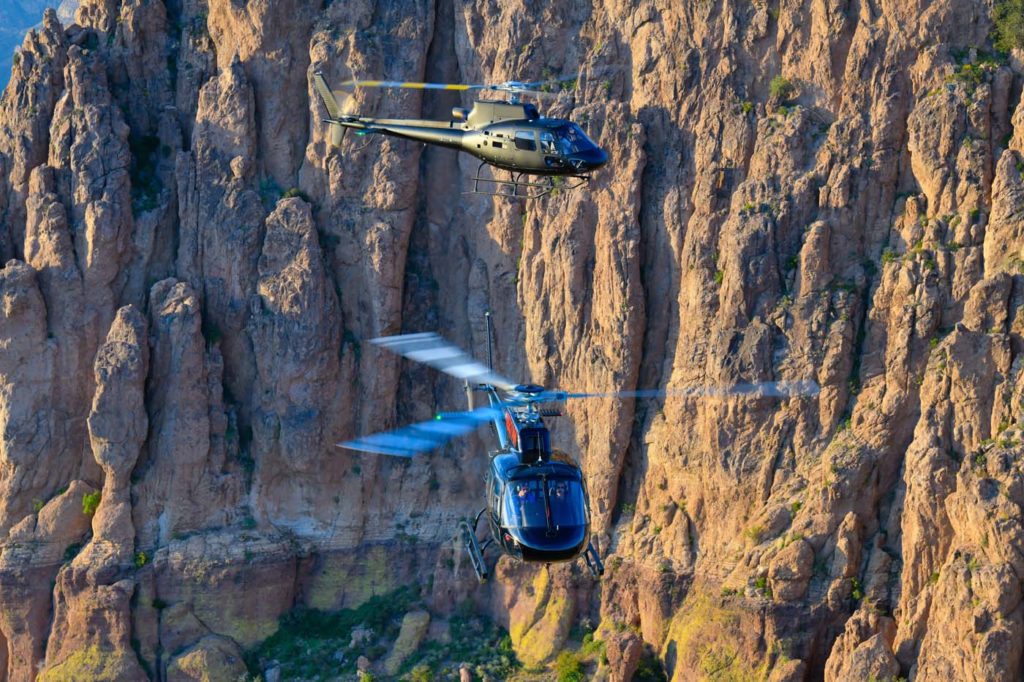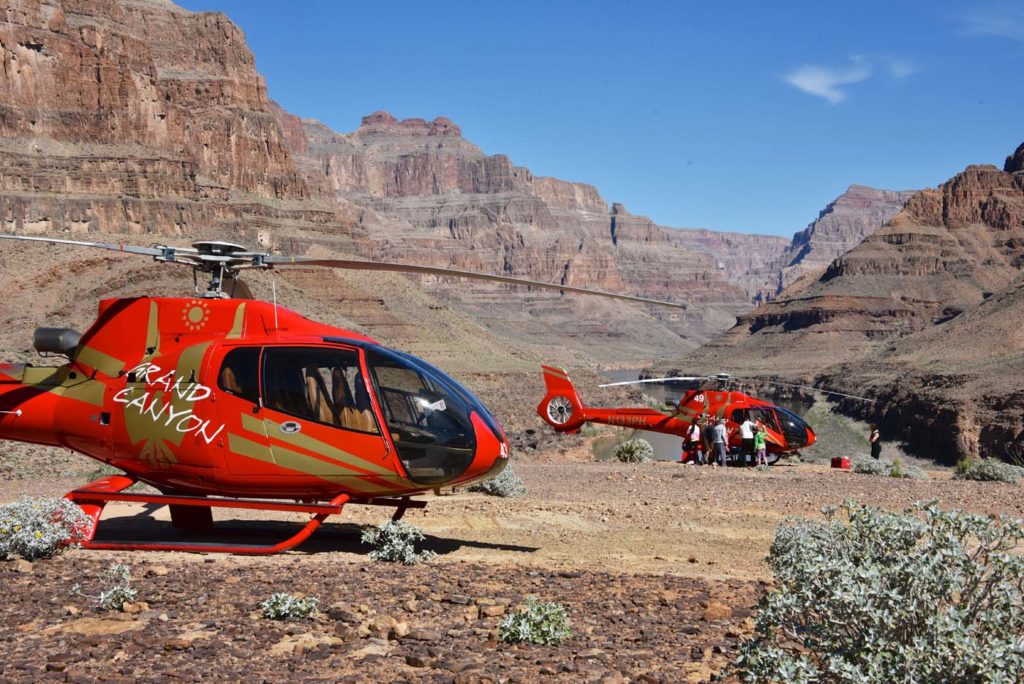When Congress passed the FAA Reauthorization Act of 2018, it prohibited helicopters manufactured after April 5, 2020, from flying in U.S. airspace unless equipped with a crash-resistant fuel system (CRFS).

The mandate eliminated a loophole that had persisted since 1994, when the Federal Aviation Administration (FAA) adopted CRFS standards for normal and transport category rotorcraft. Because the standards didn’t apply to helicopter models certified before that year, many popular models — including the Airbus AS350 (now H125) — continued to be made with noncompliant fuel systems, even as their engines and flight decks were regularly updated.
With so many helicopters lacking CRFS, fiery crashes remained all too common in the years after 1994, but few (if any) of these were captured on video. Then, on July 3, 2015, a Flight For Life Airbus H125 operated by Air Methods Corporation crashed after takeoff from a hospital helipad in Frisco, Colorado, killing pilot Patrick Mahany and seriously injuring flight nurses Dave Repsher and Matthew Bowe.
Shocking footage captured by surveillance cameras and broadcast by KUSA 9NEWS showed the aircraft engulfed in flames just seconds after impact, stoking public outrage. Repsher, his wife Amanda, and Mahany’s widow, Karen, all became tireless advocates for helicopter crash safety, and were driving forces behind the 2018 legislation.

Yet, a loophole remains. The new mandate doesn’t apply to helicopters manufactured before April 2020, even in cases where a retrofit solution is available. That means that many of the helicopters flying today still lack CRFS, both within the United States and abroad.
Two years after the mandate took effect, the helicopter industry has largely moved on. Helicopter crash safety no longer commands the attention it did several years ago, and many operators are plainly uninterested in spending the money necessary to upgrade their fleets.
But the Repshers and Karen Mahany haven’t given up, remaining adamant that no one else should suffer or die in a preventable post-crash fire. Now a leading aviation insurer, USAIG, has taken the same position.
‘Do the right thing’
USAIG’s decision to no longer insure helicopters without crash-resistant fuel systems isn’t especially recent, but many people are still unaware of it. According to Kevin Kovarik, USAIG senior vice president and co-head of general aviation — rotor-wing business line principal, the company made the decision to stop offering new policies for helicopters without crash-resistant fuel cells (CRFC) about two years ago. Existing customers were asked to present a plan for converting to a compliant fleet.
As Kovarik explained, there are both moral and practical reasons for the decision. Post-crash fires often result in horrific tragedies, as was starkly illustrated in February 2018, when an Airbus EC130 B4 operated by Papillon Grand Canyon Helicopters crashed while landing in the Grand Canyon during a sightseeing flight.
Although all seven people on board survived the initial impact, three passengers were unable to evacuate the helicopter and died on site due to burns and smoke inhalation. Two other passengers succumbed to their burn injuries several days after the accident.
While litigation associated with the Papillon crash is ongoing, Dave Repsher’s experience illustrates how expensive such accidents can be for operators and their insurers. Repsher sustained burns over 90 percent of his body, was hospitalized for more than a year following his accident, and faces lifelong complications as a result of his injuries. In 2018, he settled with Airbus Helicopters and Air Methods for $100 million, much of which is needed for medical care.

“We have seen the results derived from accidents that have post-crash fires. In many cases there is a strong likelihood that the accident would have been survivable absent the resultant fire,” Kovarik said in an email to Vertical.
“We believe in a simple guideline: ‘do the right thing’ and ‘do the right thing the first time,’ ” he continued. “This applies to how we conduct business overall, but in this case it applies to the safety of our insureds and to protect ourselves from losses that could potentially be prevented with a piece of equipment/technology.”

Kovarik acknowledged that USAIG’s stance may not yield near-term benefits for the insurer. “In insurance you rarely see immediate results from a decision,” he said. “It’s like driving a car looking through the rear-view mirror.”
This is compounded by the fact that the law of large numbers doesn’t apply to aviation insurance like it does to auto or property insurance, where a huge pool of insureds makes probabilistic estimates more reliable. Instead, “accidents with post-crash fires are more of a severity issue than a frequency issue,” he said.
Nevertheless, Kovarik believes that the policy could help the helicopter industry move in a positive direction by incentivizing a best safety practice, much as automobile insurers have provided incentives for safety features such as airbags and anti-lock brakes.
“Insurers can play a critical role in steering policyholders toward risk mitigating behaviors and best practices,” he said. “The hope is these best practices provide a positive experience for the user and eventually take hold across a user community. I feel the direction on CRFC is similar to those other things in concept and implementation.”
A slow uptake
While not everyone agrees with USAIG’s decision, Kovarik said the response to its CRFC policy has generally been very positive.
“We try our best to be visible, as transparent as possible and honest with our insureds,” he told Vertical. “Our approach is to explain the positions we take to ensure our own financial stability which in turn allows us to bring a stable and world class product to the marketplace. Policyholders appreciate predictability regarding their costs and insurers in the future.”

But the pace of CRFS adoption in the wider helicopter industry has been sluggish. After the Flight For Life crash, StandardAero partnered with Robertson Fuel Systems on development of a retrofittable crash-resistant fuel tank for the Airbus AS350 and EC130 family of helicopters, for which no CRFS retrofit solution then existed. The tank received initial certification from the FAA in December 2017.
According to Brian Hughes, vice president of sales and marketing for StandardAero Helicopter Programs, StandardAero estimated the potential market for the tank at around 3,000 aircraft, including 1,200 AS350 B2 helicopters. While Airbus eventually certified its own CRFS retrofit solution, that version applies only to AS350 B3 and later models.
Yet, over the past four-and-a-half years, Robertson and StandardAero have only sold 200 of the tanks. Of those, more than 120 went to Air Methods, which experienced not only the Flight For Life crash, but also a fatal EC130 B4 accident a few months earlier that investigators determined was immediately survivable in the absence of a post-crash fire.
Another 23 tanks went to Papillon, which converted its entire EC130 B4 and AS350 fleet by August 2018. Since then, Hughes said, orders have mostly come one or two at a time from small operators or public agencies.
“We’re very much wanting to put in another order for dozens or even hundreds of tanks, but we haven’t seen the market respond to it yet. So we’re waiting with only a small number now in production,” he said.
Hughes admitted that the tanks were expensive when they first hit the market, but StandardAero and Robertson have since managed to drop the price by 25 percent. Airbus has also been offering generous incentives for CRFS retrofits, including a $25,000 training credit that applies to purchases of its own or the StandardAero/Robertson kit. (Airbus said that it has sold just under 200 of its own CRFS retrofit kits.)
“What we earn on developing STC programs of this nature is a very small component of what we’re doing in other aspects of our MRO business,” Hughes pointed out. “It’s a sideline, it’s something we believed in and we’ve just kept with it.”
He suggested that many operators simply don’t want to invest in upgrading older aircraft, for which the cost of a CRFS represents a larger proportion of the resale value. Absent a compelling financial incentive or regulatory mandate to retrofit, he doesn’t expect that to change.
Nevertheless, Hughes said, “StandardAero is still committed to servicing the tanks to bring them to market. We don’t have a lot on order right now, but we’re certainly ready to work with Robertson to have another run of production to get everybody the tanks they need.”
Back to Congress
If other insurers follow USAIG’s lead, that could provide the compelling financial incentive that helicopter operators need to retrofit with crash resistant fuel systems. So, too, could a better educated customer base that insists on them. But there is also a legislative effort under way to make CRFS retrofits mandatory.
In April 2022, Rep. Joe Neguse (D-Colorado), who has worked with the Repshers and Karen Mahany on crash safety legislation for several years, introduced the Helicopter Passenger Protection Act in the U.S. House of Representatives. The bill would require that all helicopters manufactured before April 5, 2020, be equipped with a CRFS within five years. It also provides for a tax credit equal to 10 percent of the cost of retrofitting.
While the prospects for the legislation are uncertain, Dave Repsher hopes the helicopter industry will come around to seeing a regulatory mandate as being in their best interest, from a safety as well as a liability perspective.
“If you have a post-crash fire and you haven’t installed a crash-resistant fuel system and someone gets hurt, I don’t think you can say any more that you didn’t know,” he told Vertical. “Even in the smallest Robinson personal helicopter, now you have a crash resistant fuel system. So it’s not a matter of weight or engineering. . . . It should have been done and legislated way back when.”
Kevin Kovarik, while acknowledging the financial pressures facing helicopter operators, also hopes that more of them will look beyond the cost of CRFS to see the bigger picture.
“Helicopters are exceptionally versatile machines and while that’s generally great for the job for which an aircraft is being used, it creates a cultural challenge,” he said, explaining that the dynamic environment in which helicopters work can pull operators into a mode in which resources, staff, and time are all stretched to their limit. “That can make it hard for leaders and managers to look beyond what they are doing right now and realistically think about what risk mitigating stones are unturned in their operation.”

Too often, Kovarik said, operators dismiss CRFC “by flawed logic that says, ‘we aren’t going to crash, so we won’t need them. In general, our hope would be for more rotor-wing operators to resist living constantly in a world of trying to do the absolute most with the absolute minimum and, instead, reserve some capacity to fully understand, evaluate, and strategically integrate the latest and most advanced opportunities to manage risk in their operation.”





